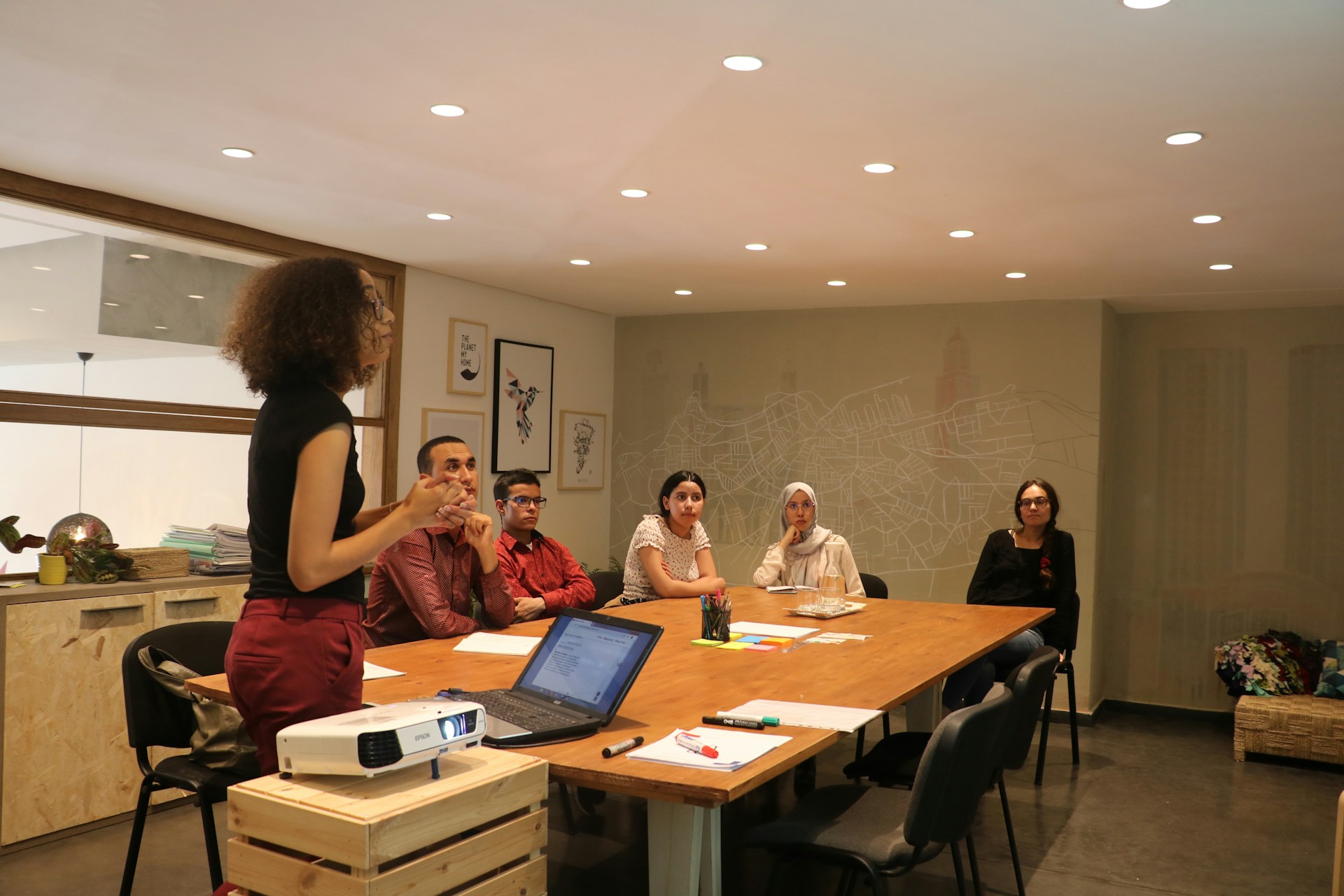Implementing BOLD training can unlock powerful shifts in how teams operate, solve problems, and make decisions together. It is designed to stretch conventional thinking, push for accountability, and drive performance. But change, even when it is positive, can create discomfort. Teams often face hesitation when they are asked to shift their mindset or adjust how they communicate and collaborate. That resistance is not a sign of failure—it is a normal response to something unfamiliar.
Addressing resistance early on is key to getting the most from BOLD training. When leaders understand what is behind their team’s hesitation, they can guide the process with more intention. Success becomes more likely when concerns are acknowledged and support structures are in place. BOLD training, by design, is meant to challenge teams to grow, but that growth depends on how ready and willing the team is to buy in.
Identifying Sources of Resistance
Before stepping into a room full of team members for BOLD training, it is important to recognize why some people push back. Resistance does not always look like refusal. It might show up as reluctance to participate, quiet skepticism, or passive behavior. To lead a team through this kind of development, leaders need to first understand the root causes behind the hesitation.
Common reasons for resistance often include:
– Fear of change: Some team members are used to doing things a certain way, and BOLD training asks them to adapt.
– Past negative experiences: If someone has been through training before that did not lead to real improvement, they may be doubtful this one will be different.
– Uncertainty about personal impact: Team members might worry about how BOLD training will affect their roles or performance evaluations.
– Lack of understanding: If the purpose of the training is not clearly communicated, people may assume it is just another checkbox exercise.
The best way to surface these concerns is to ask for honest feedback before the training even begins. One manager, for example, shared a simple pre-training survey with their team asking what they hoped to gain and what they were unsure about. The responses helped shape talking points for the rollout and lowered anxiety around expectations.
Make space for open conversations during team meetings. When people feel heard, they are more likely to shift their mindset. Understanding where the hesitation is coming from allows for tailored responses that build trust and open the door to real engagement during BOLD training.
Effective Communication Strategies
How the message gets delivered can shape the team’s response before BOLD training even begins. Clear and confident communication sets the foundation for a successful rollout. Leaders who are upfront about what the training involves, how it will help the team, and what support will be available reduce uncertainty and build connection from day one.
Here are a few strategies to reduce resistance through better communication:
1. Speak in plain terms. Avoid jargon or corporate phrases that can feel impersonal or unclear.
2. Frame BOLD training around shared goals. Focus on how it can make daily work smoother, team relationships stronger, and leadership more effective.
3. Address doubts directly. When concerns come up, welcome the feedback instead of brushing it off. Frustration thrives in silence, but it usually fades when people feel their concerns are taken seriously.
4. Share a timeline. Help the team know what to expect and when. This lowers anxiety and prepares them to participate fully.
5. Loop in key influencers early. If there are team members with informal influence, include them in early discussions. Their buy-in can be contagious.
When leaders come across as open, available, and honest about both the challenges and rewards of BOLD training, it sets the tone for how the rest of the team responds. Trust does not happen overnight, but it is won through repeated moments of helpful, human communication.
Encouraging Participation And Engagement
Once resistance has been acknowledged and communication lines are open, the focus should shift toward engagement. Getting buy-in is not about forcing people to accept change. It is about giving them a role in shaping it. Participation improves when team members feel like part of the process, not passive recipients of it.
Setting the right environment can make all the difference. That means creating sessions that are interactive, practical, and tied to real work experiences. If the training feels unrelated to daily responsibilities, engagement drops. But when content connects to actual tasks or challenges they face every week, participation becomes easier.
Involving team members early on reinforces this connection. Ask for input when designing training schedules or activities. Make space for feedback after each workshop or group discussion. When people feel responsible for outcomes, they stay more engaged.
Try the following engagement methods as part of your BOLD training rollout:
– Host smaller breakout sessions with hands-on problem-solving.
– Rotate facilitators or ask different team members to lead sections.
– Use real scenarios from your team’s past wins or challenges as discussion prompts.
– Encourage questions, even critical ones, to invite curiosity instead of silence.
– End each session with one action each person will take based on what they have learned.
The more natural and relevant the training feels, the more people lean into it. Energy builds around shared accomplishments and a clearer vision. And once momentum starts, continued engagement becomes easier to sustain.
Continuous Support And Follow-Up
Engagement in training is one thing. Keeping that energy alive after the sessions end is another. Without something in place to reinforce what has been learned, people revert back to old habits. Ongoing support ensures the effort is not just a burst of enthusiasm, but becomes a lasting shift in how the team operates.
Start with follow-ups that are consistent and timely. Right after training wraps, schedule individual or team check-ins. These meetings do not need to be long, but they should focus on application. What are team members finding helpful? What is still unclear? Are they hitting roadblocks? This dialog keeps people alert and focused on growth, rather than slipping back into autopilot.
Another strategy is to visually track progress. A simple shared document or tracker updated weekly with new actions or wins can go a long way. This creates built-in accountability. People see that training was not about a few hours in a room, but a shift in how things get done.
As time passes, highlight success stories. These do not have to be grand. It could be a regular meeting that runs smoother now, a conflict that got solved quicker, or a new team member adjusting faster thanks to what others learned in BOLD training. Real outcomes, even small ones, show that change is working.
Team members feel more supported when:
– Their questions are addressed quickly.
– They are given time to adapt instead of rushed.
– There is a plan for revisiting key lessons over time.
– Leaders apply the same principles and lead by example.
Support is more than follow-up emails. It is an active, ongoing effort to embed training outcomes into the fabric of daily work.
Turning Resistance Into Opportunity For Growth
Teams that work through resistance together often come out stronger. Getting past hesitations about BOLD training pushes people to think beyond comfort zones. What starts as discomfort can become a turning point for how the team communicates, makes decisions, and solves problems.
If team members once hesitated to give feedback, they might now do so respectfully and confidently. If certain voices dominated meetings before, others may now feel encouraged to share. These gains are worth noting not just for the reward, but because they reinforce the learning process.
Growth does not always happen right away. But when a leader helps the team stay open and engaged, resistance becomes less about stopping progress and more about shaping it. The goal is not to remove all friction. It is to use it to refine how the team works together.
Celebrate along the way. Acknowledge when roles become clearer, projects run smoother, or collaboration improves. These small wins confirm progress and push the team forward. Encourage open talk about where things still feel hard, and use those moments to generate new ideas or approaches.
Resistant behavior may return from time to time. That is normal. The difference comes from how the team now handles it—leaning on what they learned during training, and seeing it as part of the improvement process.
Building A Path To Long-Term Success
Sustaining the benefits of BOLD training takes more than a few successful weeks. It involves repetition, review, and continuous effort from all levels of the team. Leaders must stay alert to changes in momentum and find ways to keep lessons present.
Persistence matters. So does patience. Change sticks when it is part of a larger culture shift, not a quick fix. Training might kick off the spark, but follow-through keeps it burning. Teams grow best when growth becomes the standard expectation, not just a phase.
Maintaining a forward-thinking mindset helps teams stay adaptable. When challenges appear in the future, they can reflect on what worked during training. That memory gives confidence and direction. They have built the tools, they just need to keep using them.
Long-term results grow from consistency, clarity, and shared purpose. Adapting to BOLD training may test a team’s structure at first, but done right, it strengthens their foundation. All teams encounter resistance. But the ones that address it with connection, curiosity, and structure come out far better prepared for whatever lies ahead.
Driven Leadership offers proven solutions to overcome team resistance and foster lasting change. Our professionals understand that effective BOLD trainingequips teams to engage more openly, adapt to challenges, and grow with clarity and continuous support. For a quick estimate or to book a service visit, please contact ustoday.










